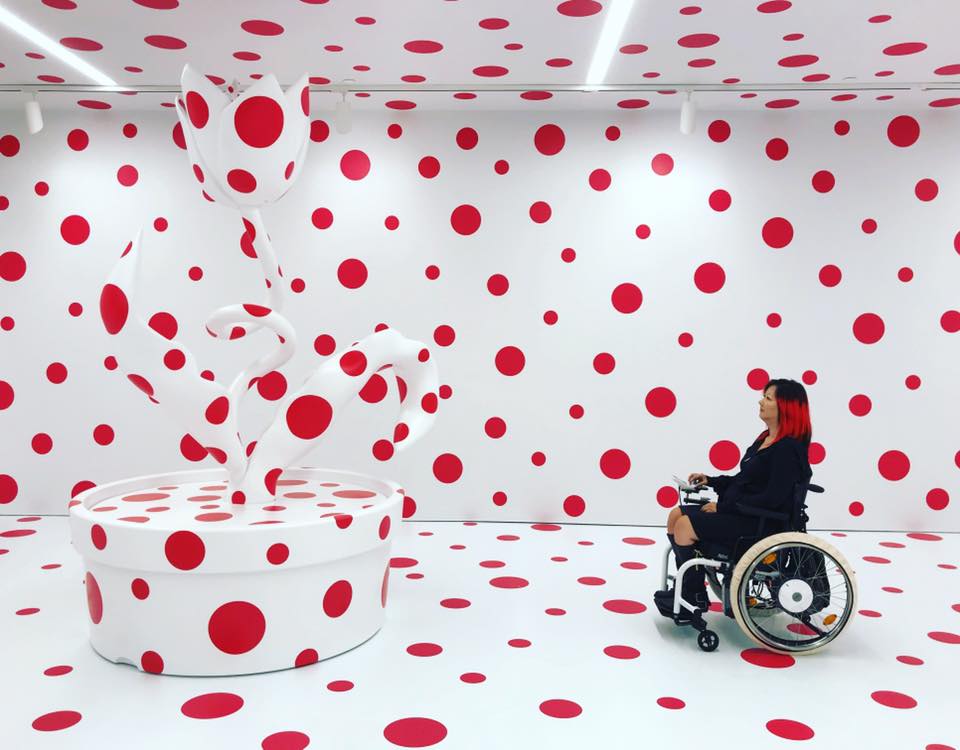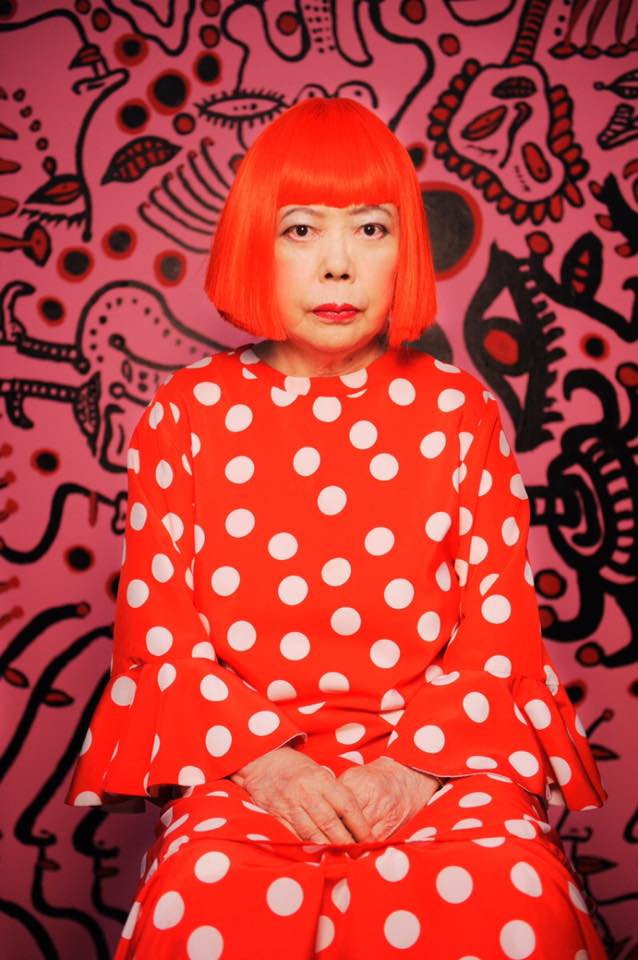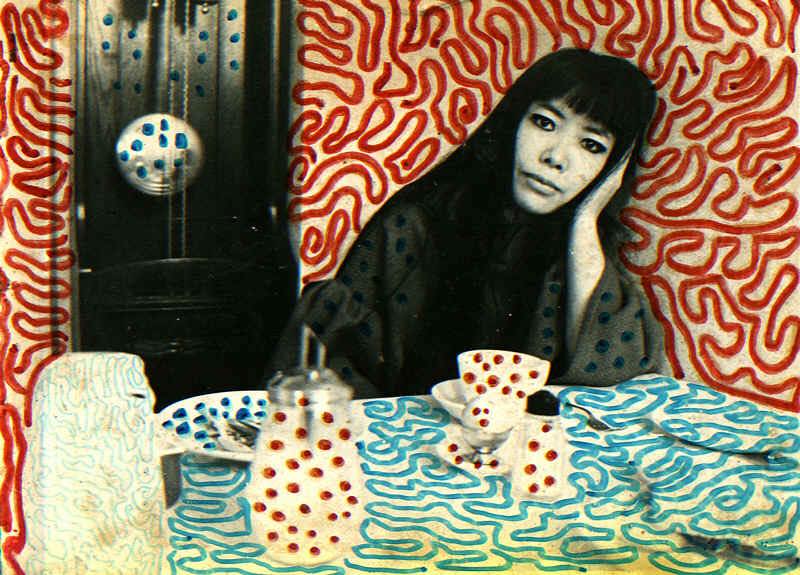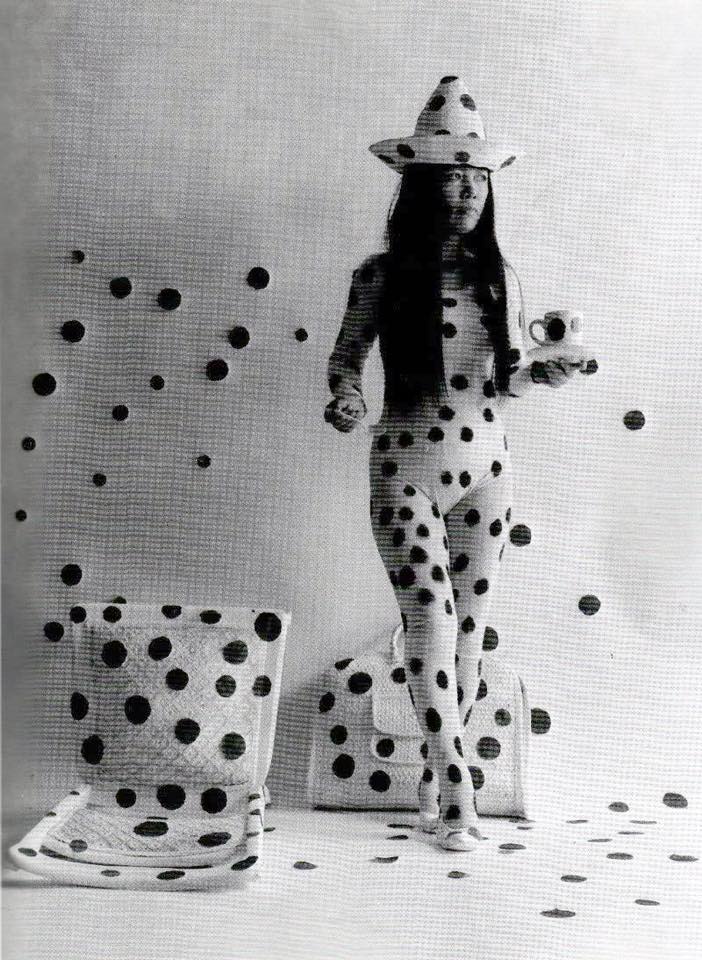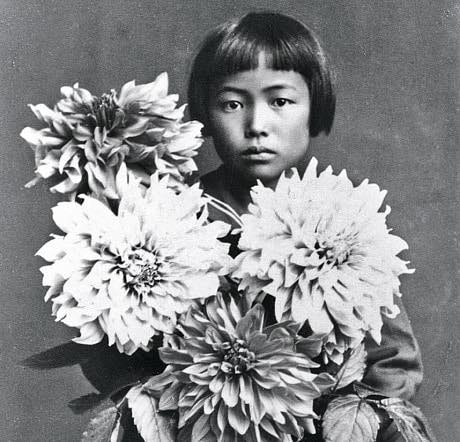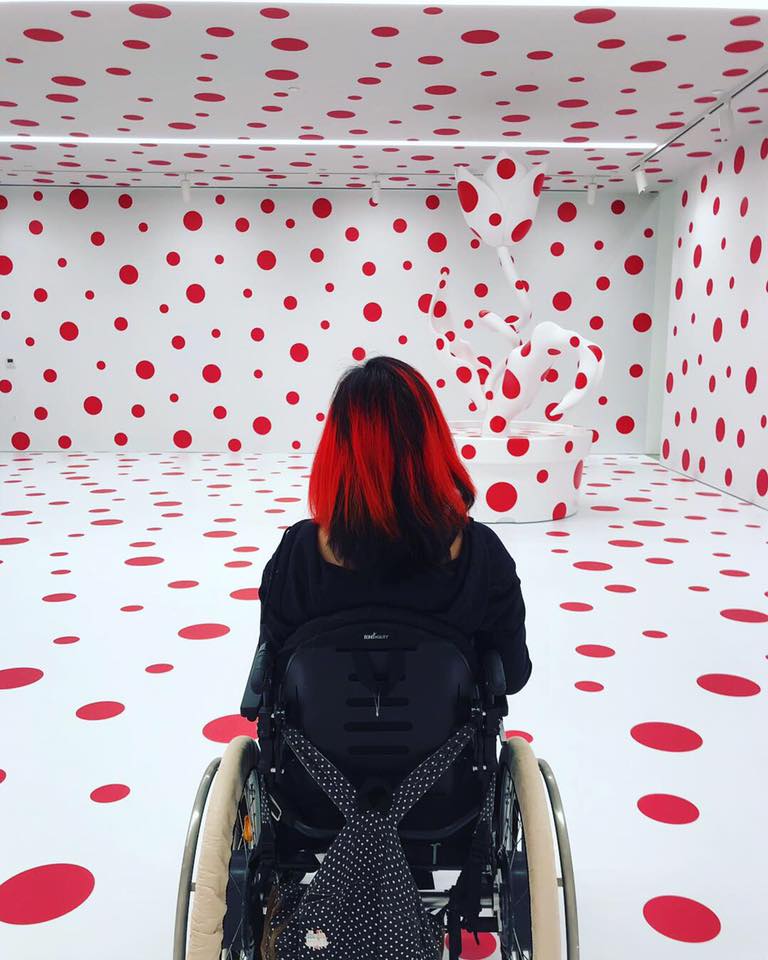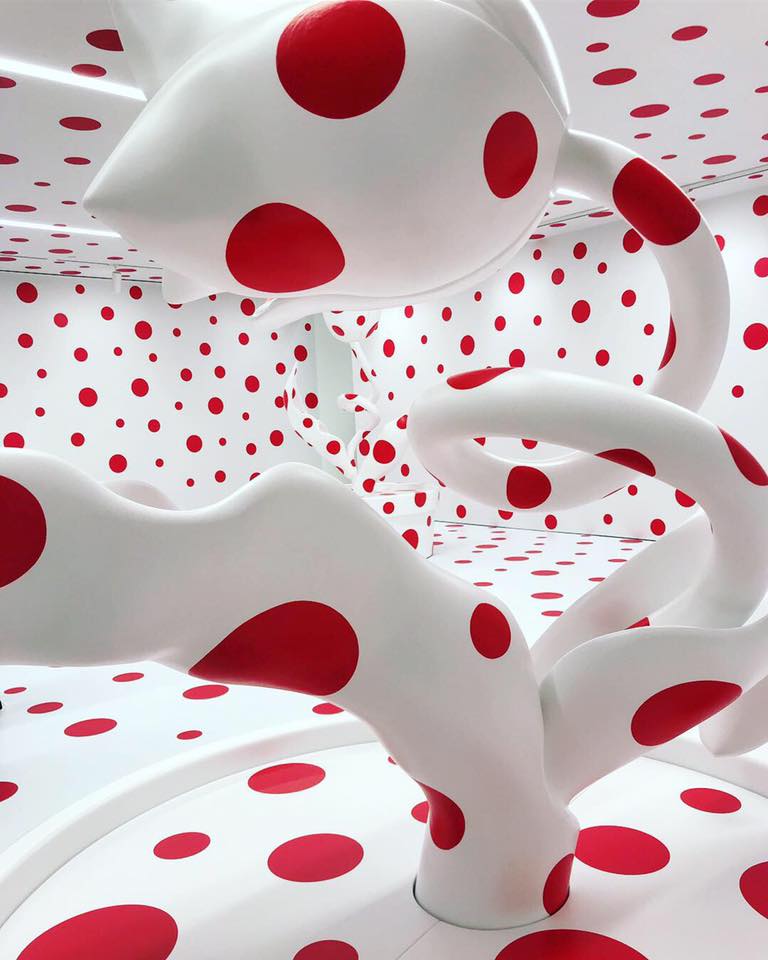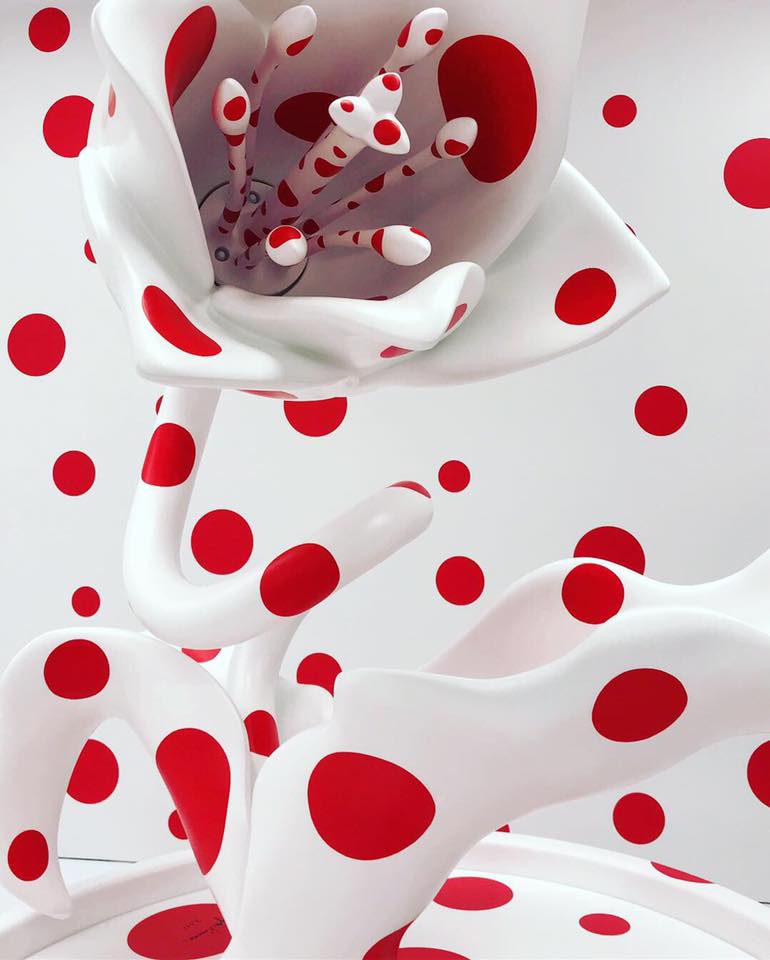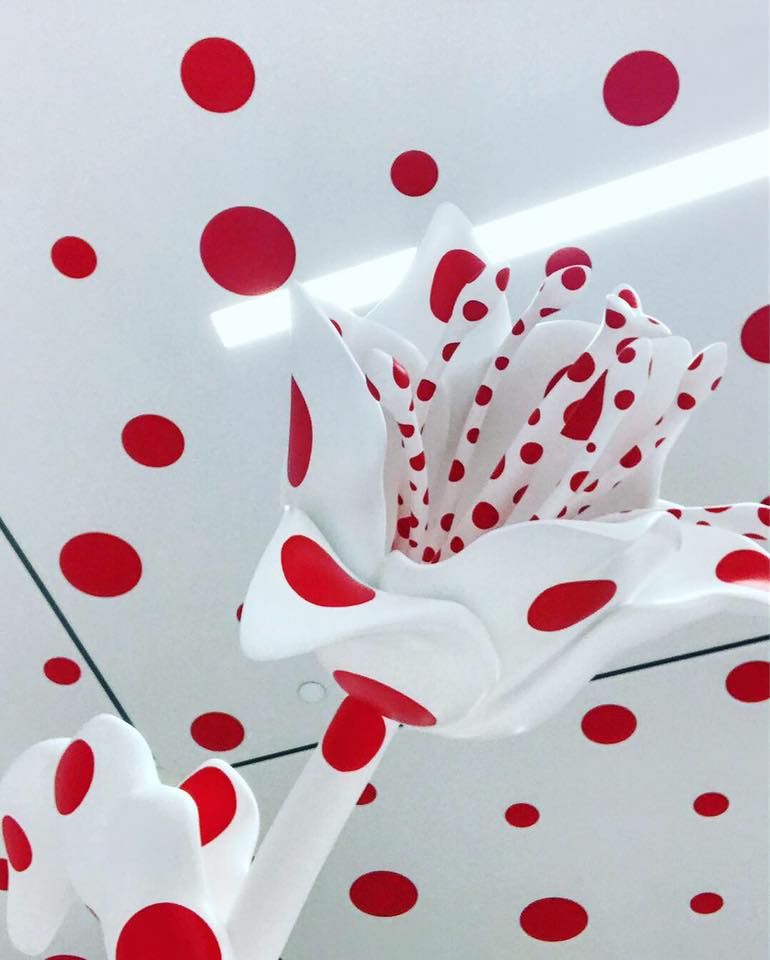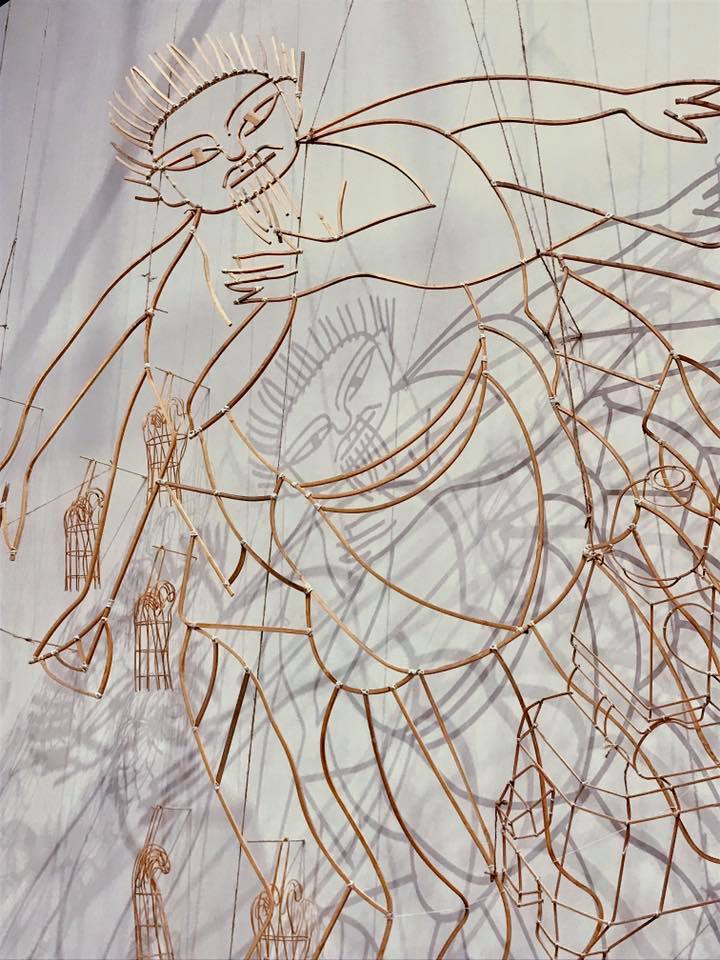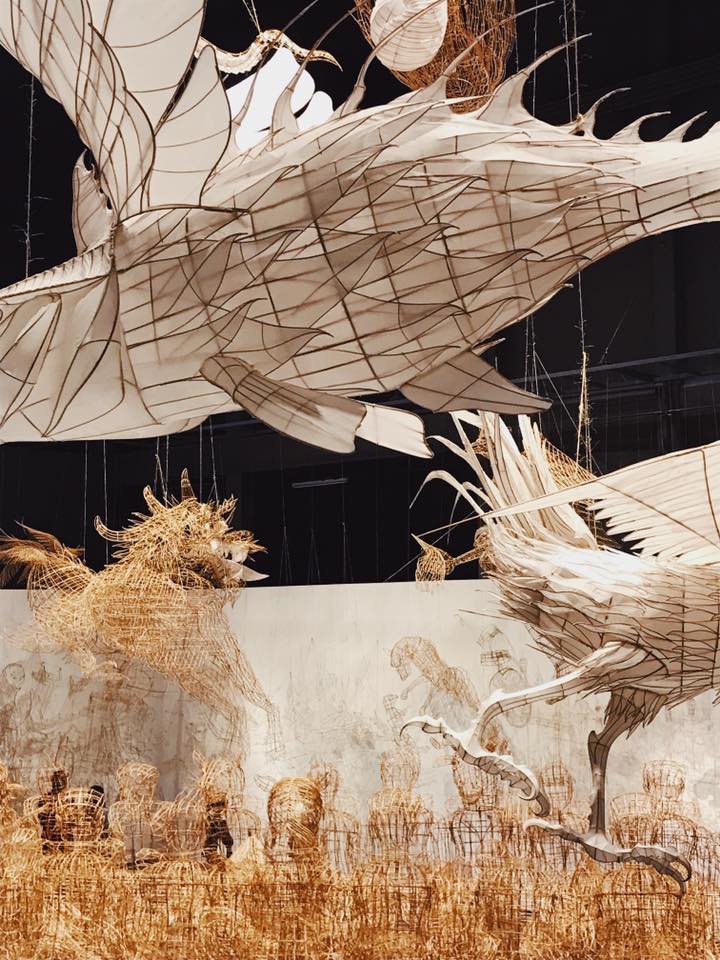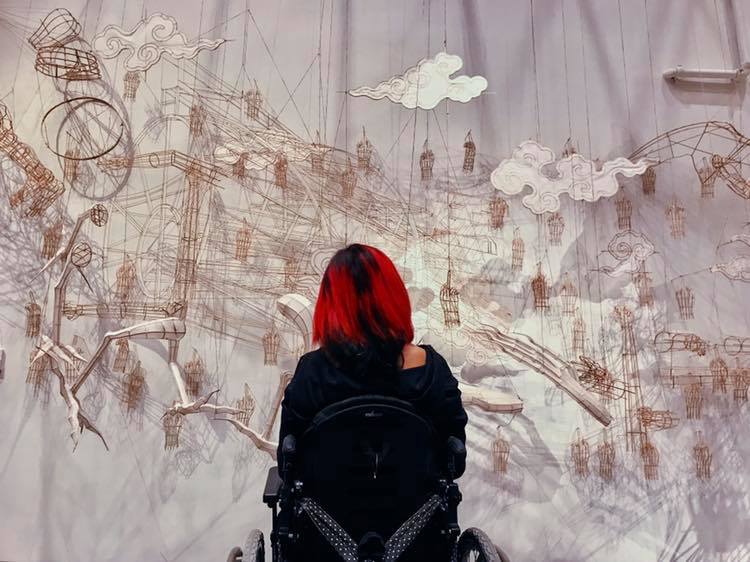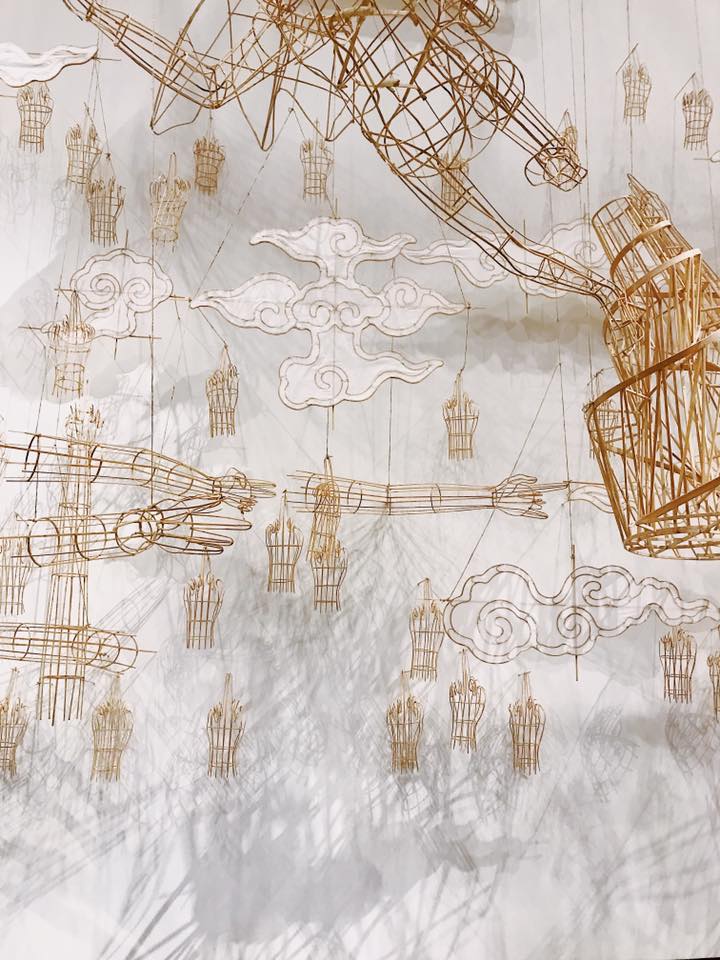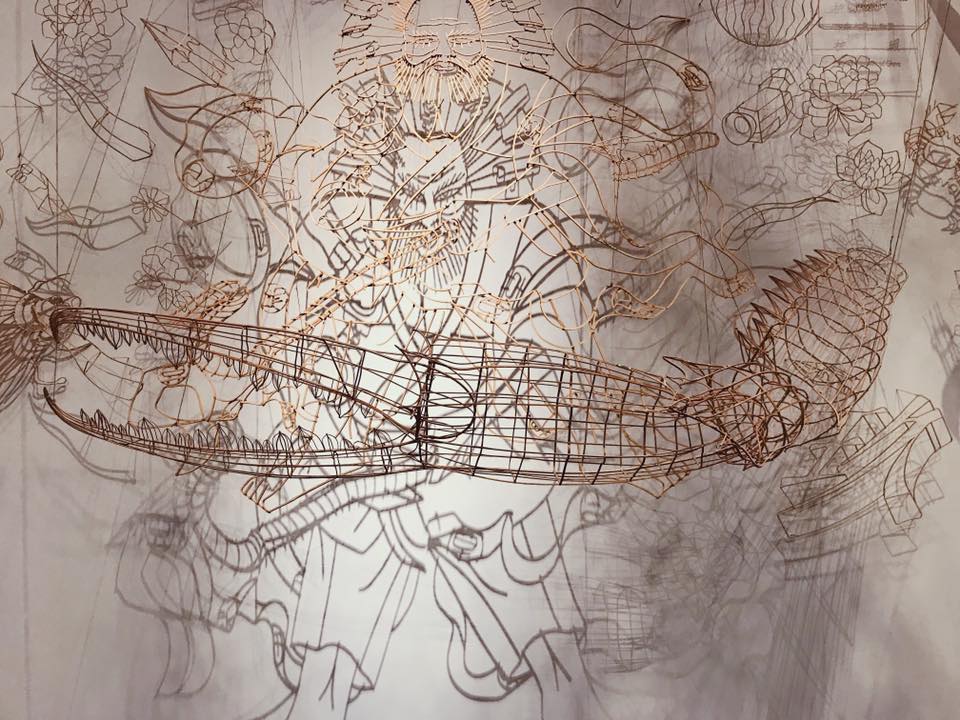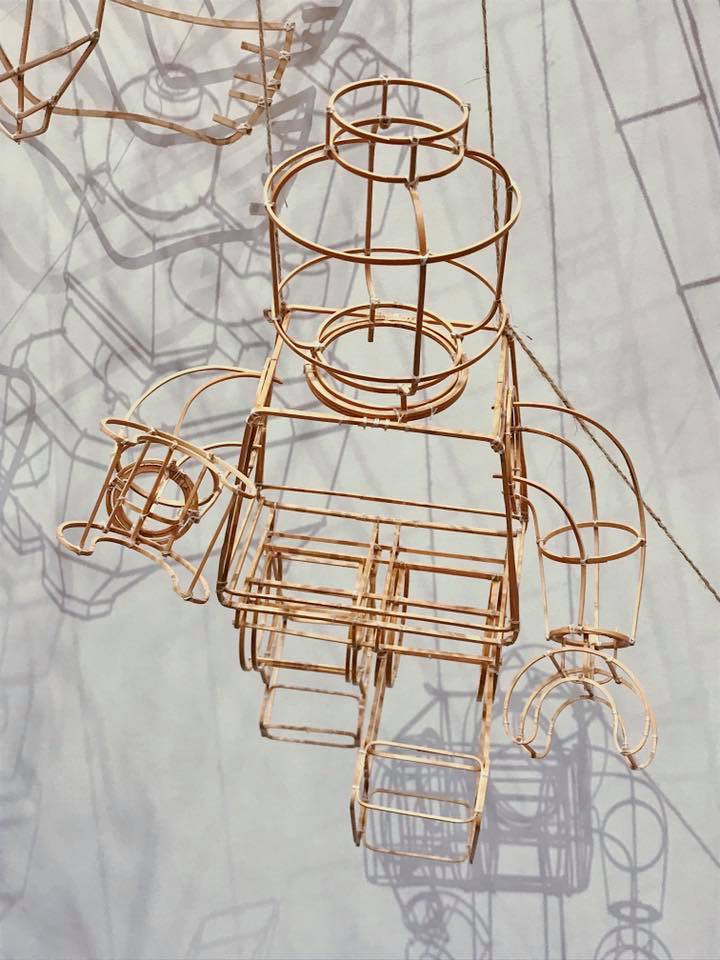Yayoi Kusama, With All My Love for the Tulips, I Pray Forever, 2011
“I fight pain, anxiety, and fear every day, and the only method I have found that relieves my illness is to keep creating art. I followed the thread of art and somehow discovered a path that would allow me to live”
Yayoi Kusama and Ai Weiwei are among my favorite contemporary installation artists and I had the opportunity to view both their exhibitions for the first time at Marciano Foundation in Los Angeles. Both artists are different in their own right, Kusama focusing on her life-long experiences with hallucinations and Ai Weiwei visual commentary on global socio-political issues yet both artist’s work portray an inside peak into the human condition.
* * *
Rejecting her conservative and abusive parents, Kusama left her family’s prosperous seed business at 28 to pursue an art career in America. Her story is of racism, misogyny, mental illness, anxiety, perseverance, idea theft, protest and finally acknowledgement as a worldwide art influencer.
Since childhood, Kusama has been afflicted with a condition that makes her see spots, forcing her to see the world and the objects around her through her hallucinations and paranoia. As a young girl she painted and wrote to ward off the images her mind relentlessly played for her. Her mother was unsupportive of her art ambitions. Kusama is fascinated by childhood and the way adults have the ability to see like children at their most creative, a similar theme in Alice and Wonderland.
Kusama’s avant-garde art career has spanned 65 years and today she is the highest paid living female artist — considered one of the most important and unique modern artists of our time. She’s often considered a major influence on Warhol, a precursor to pop art.
What I like about her work is she invited people to see what she sees through visceral installation, sculpture, paintings, drawings, writing, film and performance. Forty years ago she voluntarily checked herself into a mental institution for her severe panic attacks and hallucinations but at near 90 has worked every day creating art and patterns that cover voids and infinite space. Step into someone else’s world and get a glimpse of what they see.
“I am just another dot in the world.” “If it were not for art, I would have killed myself a long time ago." -Yayoi Kusama
Ai Weiwei, LifeCycle, 2018
“Liberty is about our freedom to question everything.” -Ai Weiwei
Ai Weiwei is a Chinese contemporary dissident artist and political human rights activist who, at his own risk, has been openly critical of Chinese government’s stance on democracy and human rights. His outspoken installation art, film and photography imprisoned him, his studio was demolished, passport confiscated and subjected to government surveillance.
Provocateur Ai Weiwei is known for his conceptual installations contemplating contemporary world vs traditional thought. His subversive installations, performances & films address authority, corruption, government coverups, controlling elites, globalization, war and history as he examines humanity’s existence in correlation to economic, social, political, global plight of refugees, forced migrants and the marginalized.
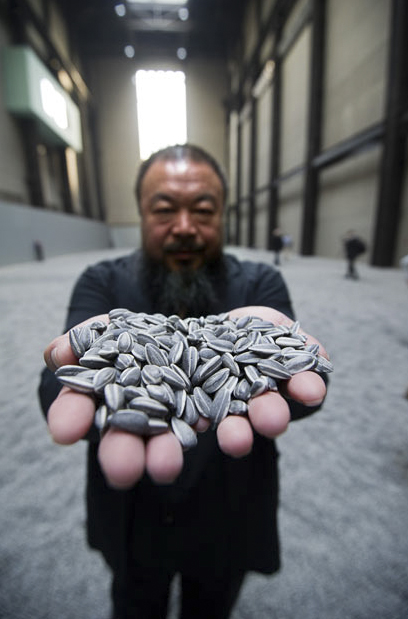
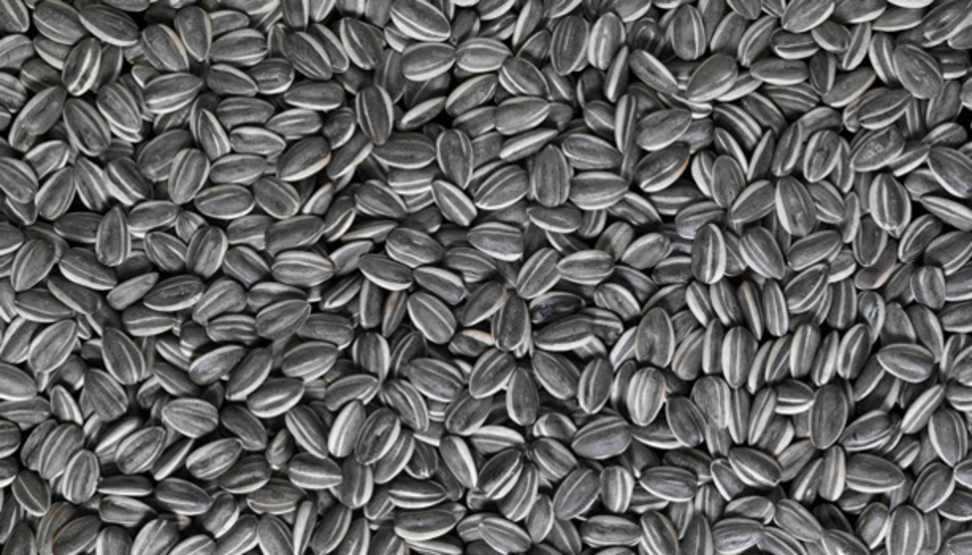
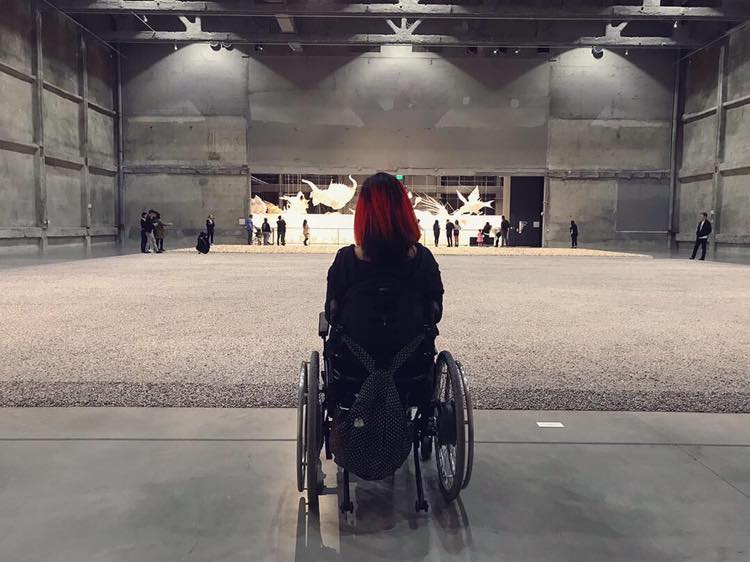
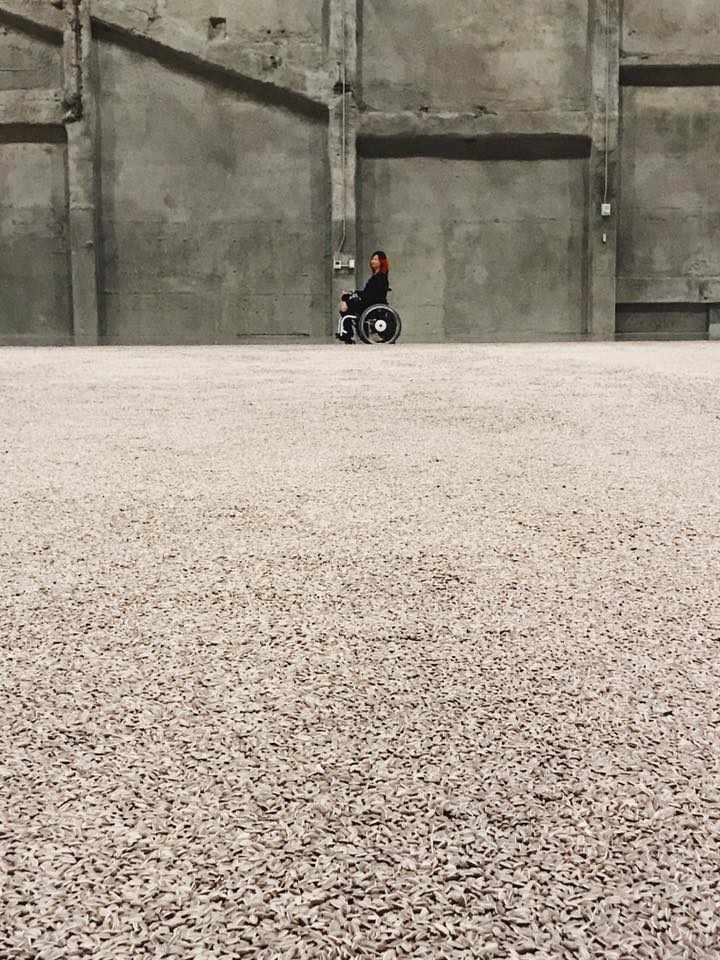
Ai Weiwei, Sunflower Seeds (2010) is composed of 50 million individually handcrafted porcelain sunflower seeds made by 1600 female artisans from an ancient region famous for its kilns and production of imperial porcelain dating back 1,000 years. No two seeds are alike.
This installation further expands upon reoccurring themes such as the individual’s role in society, economic exchange and geopolitics. Sunflower seeds is inspired by propaganda posters of the Cultural Revolution of 60s and 70s, depicting Mao Zedong as the sun and his faithful citizens as sunflowers turning to face him. It’s a commentary on individuals role in society in the Internet age, humans rights, materialism, globalization, mass-production in China and disappearance of Chinese culture.
Ai Weiwei, Spouts (2015) is a boneyard of 10,000 antique teapot spouts dating as far back to the Song dynasty (960–1279). Spouts can be observed as a metaphor for a mass of mouths, and a widespread craving for freedom of speech — representing Ai’s political dissidence and importance of freedom of speech.
Ai Weiwei, Lifecycle (2018)
“I was a child refugee. I know how it feels to live in a camp, robbed of my humanity. Refugees must be seen as an essential part of our shared humanity.” - Ai Weiwei
”Lifecycle” is a culmination of 10 years efforts crafted by Chinese artisans utilizing an ancient kite-making technique dating back to the Ming dynasty. A delicate sculptural response to the global refugee crisis depicting an inflatable raft. 113 Mythic Chinese creatures surround the 60 foot raft composed of bamboo and silk which were commissioned and crafted in an ancient province with a tradition in kite-making dating back to mid 1300s. As a child Ai and his family were refugees. As a refugee he would scavenge bamboo to make kites. These delicate structures mirror the fragility of humans and humanity. It's "as light as our spirit, as our spirit for freedom, our spirit for humanity being as one” says Ai. “Lifecycle” was the last art shipped from Ai’s Shanghai before it was destroyed by the government without notice.
“Nationality is a Western concept. It was an invention of European scholars, whoever since have struggled to explain it.” -Joseph Roth, The Wandering Jews, 1927
Ai Weiwei, Windows (2015)
“I am the tree you are me with the land and the sea. We are one life not three in the essence of life we are one.” - Kevin Gilbert, Unity, Back from the Edge, 1994
Windows exhibit is a delicate bamboo and silk vignettes representing Chinese mythology, ancient tales, historical references, life and works of Ai Weiwei and history of 20th century art. They surround the 60 foot raft and themes vary from freedom of speech and social justice — illustrating symbols of state surveillance and control.
I hope my love for nature and art inspires you to become observers. These kinds of distractions give me purpose and sight past my current situation. In LA there are so many galleries and museums that are free, including Marciano Foundation currently exhibiting both these exhibitions, so it’s easy to patron. Art is not unattainable nor reserved for certain groups. It is what you make it and belongs to the perceiver in the moment. Try to visit art more often, and more importantly the messages it contains.
“If my art has nothing to do with people’s pain and sorrow, what is ‘art’ for?” - Ai Weiwei
My art gallery
Follow my wheelchair travels, art and mini-memoirs at Instagram.com/kamredlawsk and Facebook.

